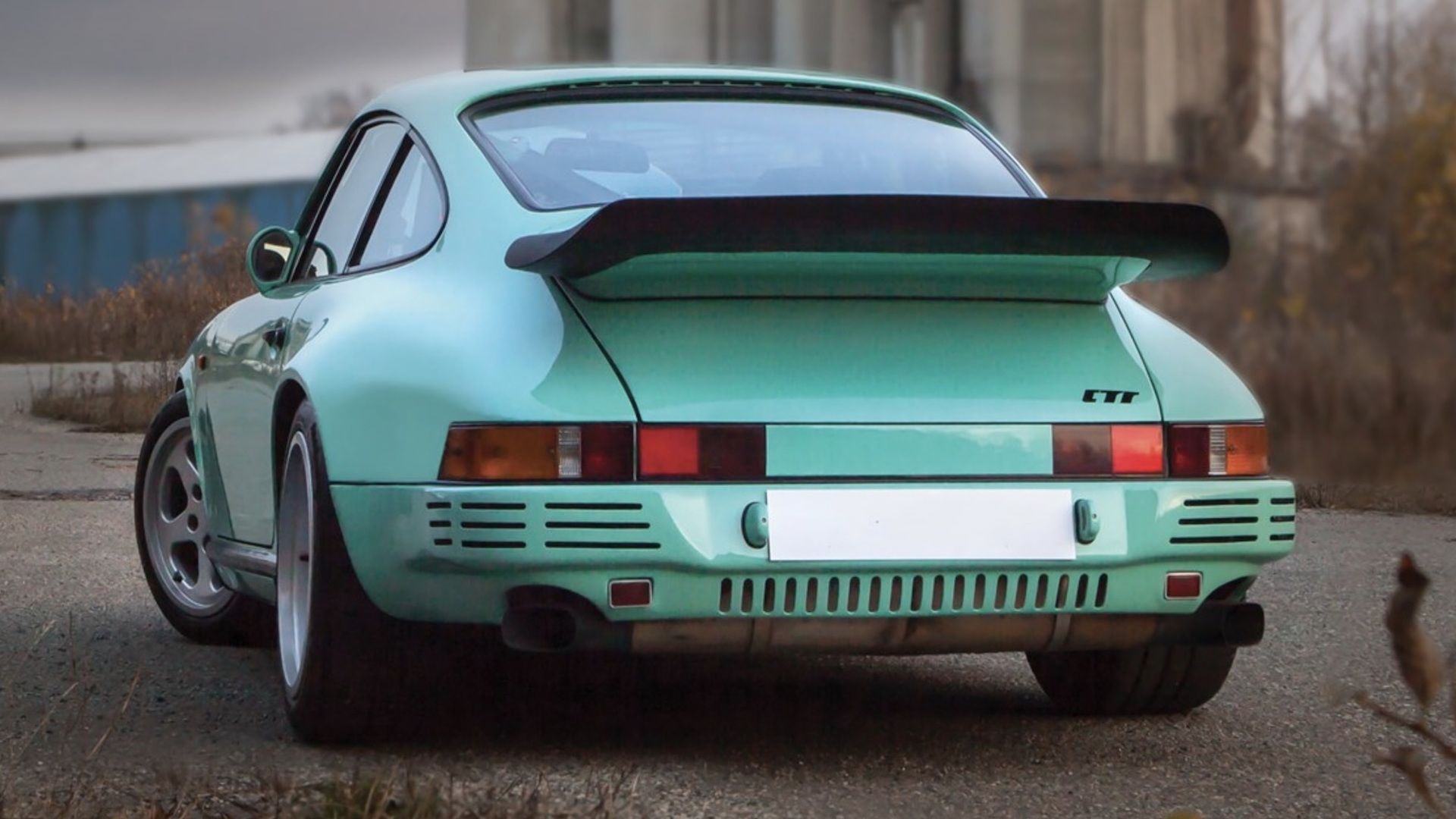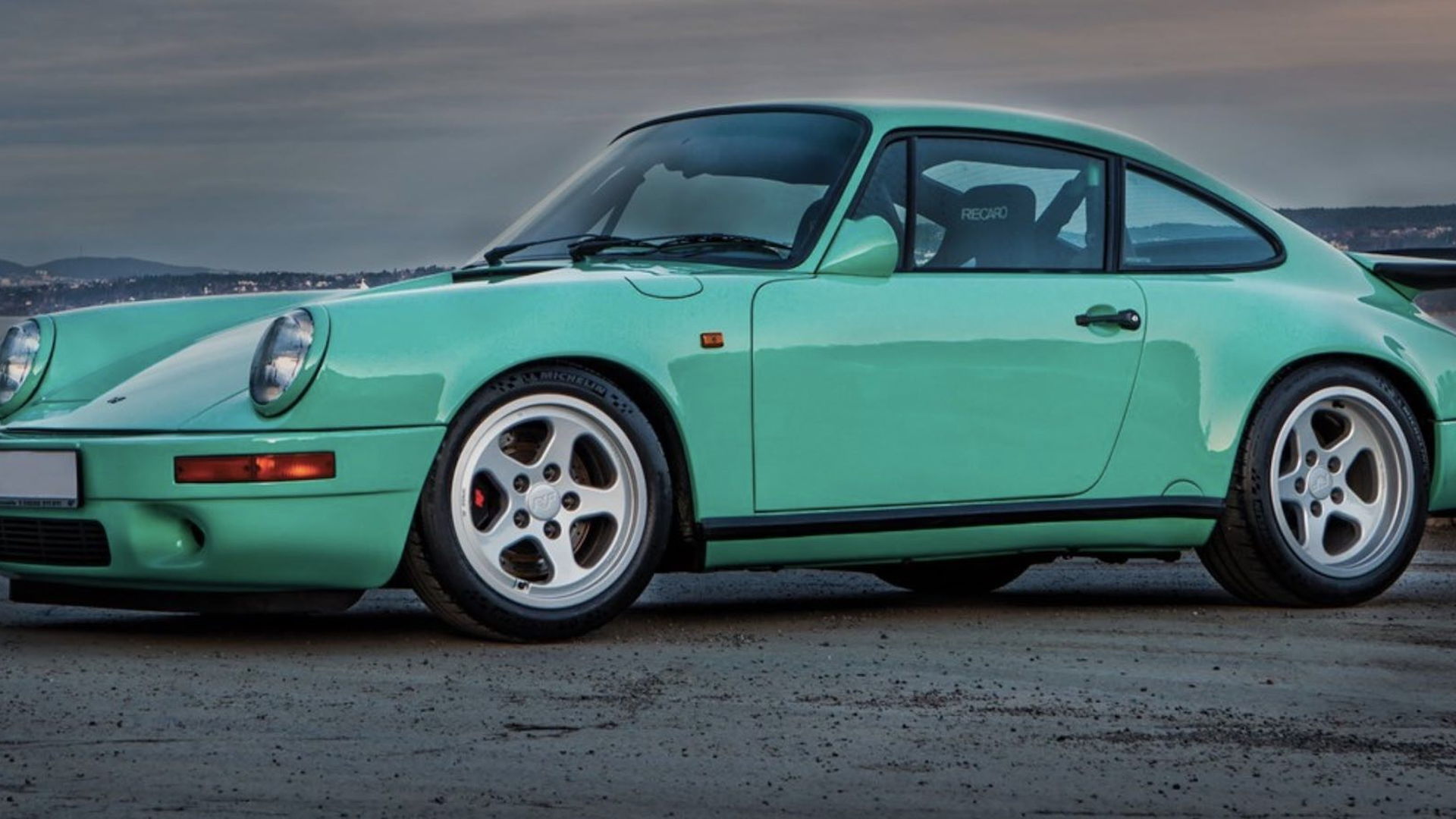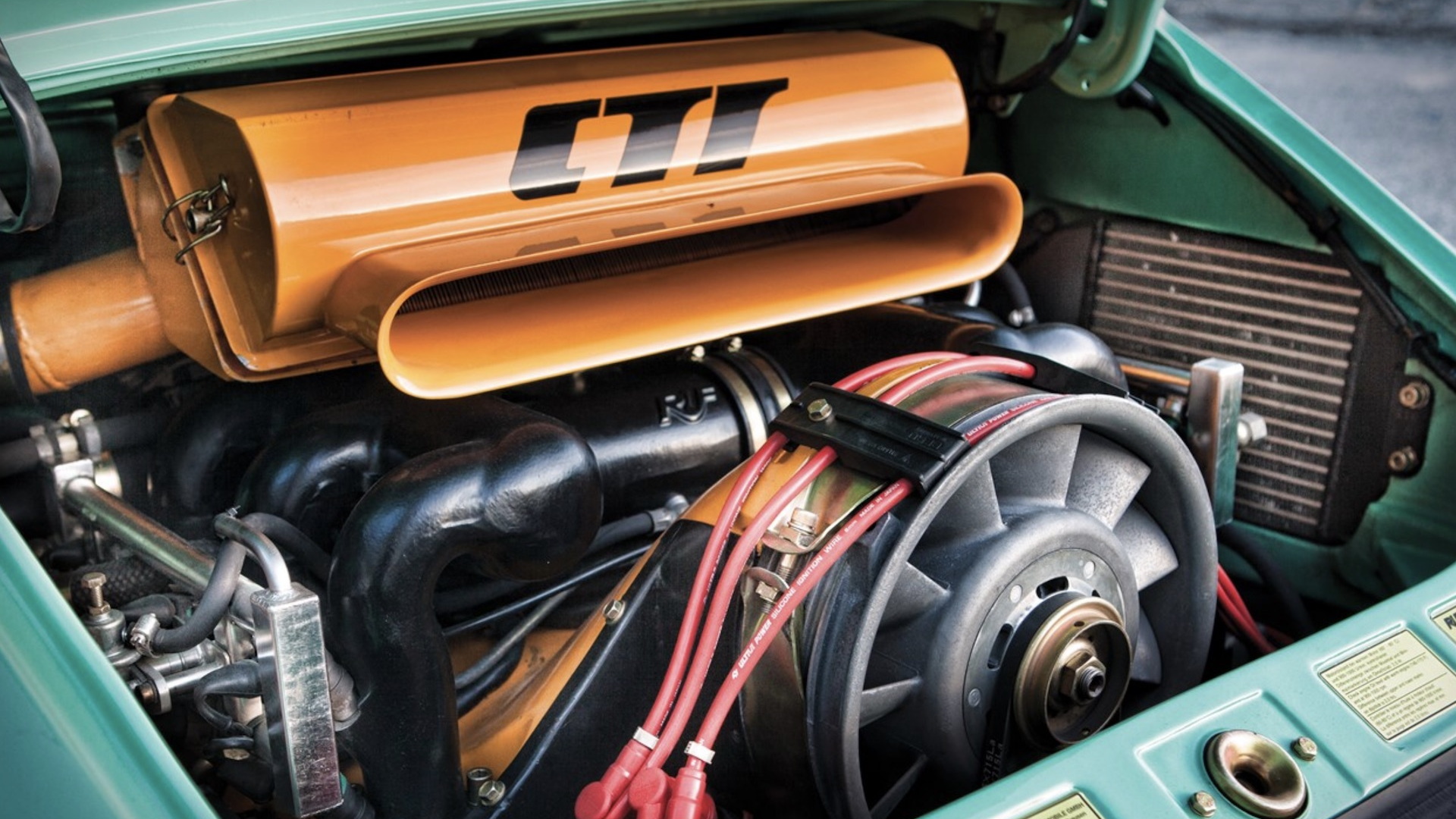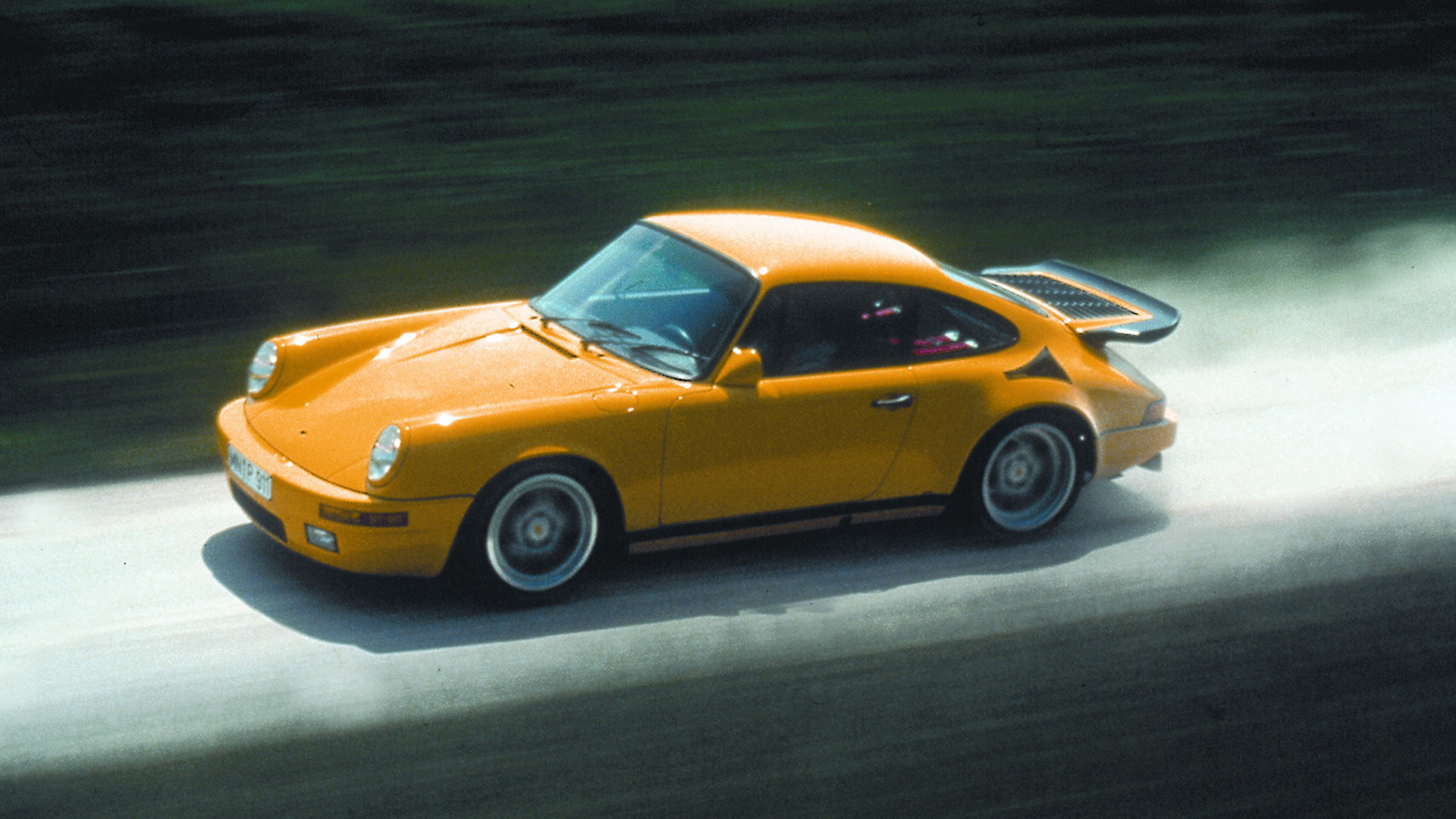Sometimes Cinderella gets the prince and nothing has to turn into a pumpkin.
In 1987, a Porsche tuner called Ruf competed against the top supercars of the day and beat them all with a car that was officially called the CTR but became better known as the “Yellowbird.”
Ruf had spent a decade modifying regular Porsches with turbochargers, stroked engines, and enhanced suspensions, then it decided to go full hog on a 911.
Ruf didn’t start with Porsche’s top dog to create the Yellowbird. Instead of the 930-generation 911 Turbo, Ruf opted for the 911 Carerra 3.2 as its starting point because it was a lighter car. That left a factory turbocharger out of the equation, and Ruf got to work enhancing so much of the 911 that the company qualified in Germany as a manufacturer rather than just a tuner.
Each CTR (a name derived from Group C Turbo Ruf) started out as a factory 911 3.2 that Ruf bought from Porsche. To cut weight, Ruf replaced the doors, engine cover, and frunk with aluminum components and changed the front and rear bumpers to fiberglass. In the name of aerodynamics, Ruf eliminated the rain gutters, and opted for just a single 935-style side mirror. The rear wheel arches had to be flared to fit larger wheels and tires, and NACA ducts were added at the top of the rear fenders to cool the incredible powerplant that was to come.

1988 RUF CTR Clubsport
Ruf bored out the stock 3.2-liter flat-6 to displace 3.4 liters, added a custom twin turbo system with twin intercoolers, and installed Bosch fuel injection. Ruf quoted 469 hp and 408 lb-ft of torque, but owner Alois Ruf said those were worst-case scenario figures and the car likely made more than 500 hp. The curb weight, below 2,600 lb, gave the car a power-to-weight ratio that rivals today’s 911s. How detail-obsessed was Ruf with its Yellowbird? It deemed the then-current 5-speed wasn’t good enough and created its own beefier 5-speed, in part to handle the power and in part to design the gear ratios.
The suspension also got an upgrade, and a roll cage added structural stiffness. The brakes were swapped out for 13.0-inch Brembos, and the car wore larger Speedline wheels and Dunlop tires.
All of the work translated to a world-beating, but little-known supercar. Road & Track tested the car at Volkswagen’s 15.5-mile Ehra-Lessien research oval in Germany in the spring of 1987 as part of the magazine’s “World’s Fastest Cars” feature. The CTR Yellowbird clocked a top speed of 211 mph, making it the fastest car in the world. It also put up a 3.7-second 0-60 mph time and a 7.8-second 0-100 mph sprint. The CTR emerged as the victor against the likes of the Porsche 959, Ferrari Testarossa, Lamborghini Countach, and Mercedes AMG Hammer. R&T editors noted the car looked like a yellow bird dashing across the horizon. The colloquial nickname has stuck to this day, with many fans merely calling Ruf’s supercar “Yellowbird.”
The underdog magazine win, teamed with a raucous video called "Faszination on the Nürburgring" that showed test driver Stefan Roser sliding the car around the Nürburgring, made the Yellowbird the stuff of dreams for a generation of young car enthusiasts. The car has even appeared in several video games, including the “Forza” and “Gran Turismo” franchises.
Ruf built only 29 CTRs from factory-fresh 911s, and 20-30 more were converted from customer cars. The company followed up the CTR with the CTR 2 in the mid-1990s and the CTR 2017 in, well, guess which year. Those cars were engineered feats in their own right, but they were never able to sneak up on the established supercar makers like the CTR Yellowbird did in 1987.
—Sean Szymkowski contributed to this story





